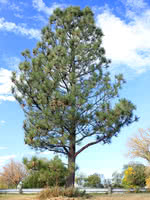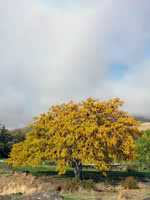Mon-Fri 9am - 5pm Mountain time
Ponderosa Pine vs Thornless Honeylocust
Pinus ponderosa
Gleditsia triacanthos inermis
Ponderosa Pine is the tallest known pine in North America. This popular evergreen has distinctive, textured bark and long needles.
This makes it an excellent ornamental tree for landscaping on large properties. Ponderosa Pine is hardy in a variety of soil conditions.
Thornless Honey Locust makes an excellent shade tree with its lacy foliage and dappled shade. The leaves are honey-yellow, light and airy, providing interesting color and texture to your landscape. This variety is thornless, and the seeds and pods provide food for wildlife such as deer and squirrels.
The Thornless Honey Locust is tolerant of drought, various soil conditions, and even road salt.

